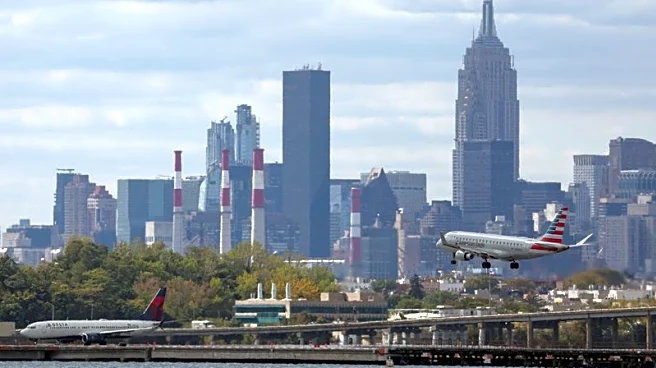What's Happening?
Several major U.S. airlines are undergoing significant changes in their route networks due to financial pressures and shifts in travel demand. Spirit Airlines, facing bankruptcy, has halted 40 routes and received
financial support to stabilize operations. Delta Air Lines is discontinuing its long-haul route from New York's JFK Airport to Brussels and other domestic routes, while adding new international services. American Airlines is ending its Dallas to Eugene route but expanding its international offerings. Frontier Airlines has ceased operations at Vail/Eagle County Airport but is introducing new routes from major U.S. airports.
Why It's Important?
These adjustments reflect broader challenges in the airline industry, including financial strain from supply chain disruptions and changing travel patterns post-pandemic. Airlines are reevaluating their networks to focus on profitable routes, impacting travelers and regional economies. The changes could lead to reduced connectivity for some areas while enhancing international travel options. Stakeholders such as local governments and airport authorities may need to adapt to these shifts to maintain economic vitality.
What's Next?
Airlines are likely to continue reassessing their route networks in response to evolving market conditions. This may involve further cancellations or new route introductions as they seek to optimize operations. Stakeholders, including affected communities and travelers, may experience changes in travel accessibility and options. Airlines will need to balance financial sustainability with customer demand to navigate these challenges effectively.
Beyond the Headlines
The route adjustments may have long-term implications for regional connectivity and economic development. Airports losing service may face challenges in attracting new carriers or maintaining passenger traffic. Conversely, new international routes could boost tourism and business travel, benefiting local economies. The industry’s response to these challenges could influence future strategies for managing financial and operational risks.














